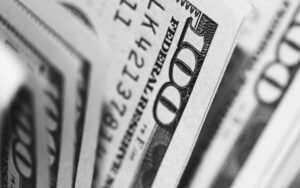The Exponential Moving Average (EMA) is a widely used technical indicator in the forex market. It helps traders identify trends, determine entry and exit points, and manage risk. In this article, we will explain what EMA is, how to calculate it, and how to incorporate it into your trading plan.
EMA is a type of moving average that gives more weight to recent price data. Unlike the Simple Moving Average (SMA), which calculates the average price over a specified number of periods, the EMA gives higher importance to recent prices. This makes it more responsive to price changes and helps traders identify trends earlier.
To calculate the EMA, you need to follow a few steps. First, determine the number of periods you want to use for the calculation. This could be any number, but commonly used values are 9, 12, 20, or 50. The choice of period depends on your trading strategy and time frame.
Next, gather the closing prices for the specified number of periods. Let’s say you want to calculate the 9-period EMA. Take the closing prices of the last 9 periods and add them together. Divide the sum by 9 to get the initial EMA value.
Now, you need to calculate the multiplier. The multiplier is determined by the number of periods you are using. For a 9-period EMA, the multiplier is 2 ÷ (9 + 1) = 0.2. The formula for calculating the EMA is:
EMA = (Closing price – EMA previous day) × multiplier + EMA previous day
For example, if the closing price is 1.2000 and the previous day’s EMA is 1.1980, the calculation would be:
EMA = (1.2000 – 1.1980) × 0.2 + 1.1980 = 1.1992
Repeat this calculation for each day, using the previous day’s EMA value. The result is a series of EMA values that can be plotted on a chart to visualize the trend.
Now that you know how to calculate the EMA, let’s discuss how to incorporate it into your trading plan. The EMA can be used in various ways to improve your trading strategy.
Firstly, you can use the EMA as a trend indicator. When the price is above the EMA, it indicates an uptrend, and when it is below the EMA, it indicates a downtrend. Traders often look for opportunities to enter trades in the direction of the trend. For example, if the price is above the EMA, they may look for buying opportunities.
Secondly, the EMA can be used as a support or resistance level. During an uptrend, the EMA line may act as a support, where the price bounces off the line before continuing its upward movement. Conversely, during a downtrend, the EMA line may act as a resistance level. Traders can use these levels to enter or exit trades.
Lastly, the EMA can be used to generate trading signals. One common strategy is the EMA crossover, where traders look for a crossover between two EMAs of different periods. For example, when the shorter-term EMA crosses above the longer-term EMA, it generates a buy signal. Conversely, when the shorter-term EMA crosses below the longer-term EMA, it generates a sell signal.
In conclusion, the Exponential Moving Average (EMA) is a powerful tool for forex traders. It helps identify trends, determine entry and exit points, and manage risk. By incorporating the EMA into your trading plan, you can improve your trading strategy and increase your chances of success in the forex market.






